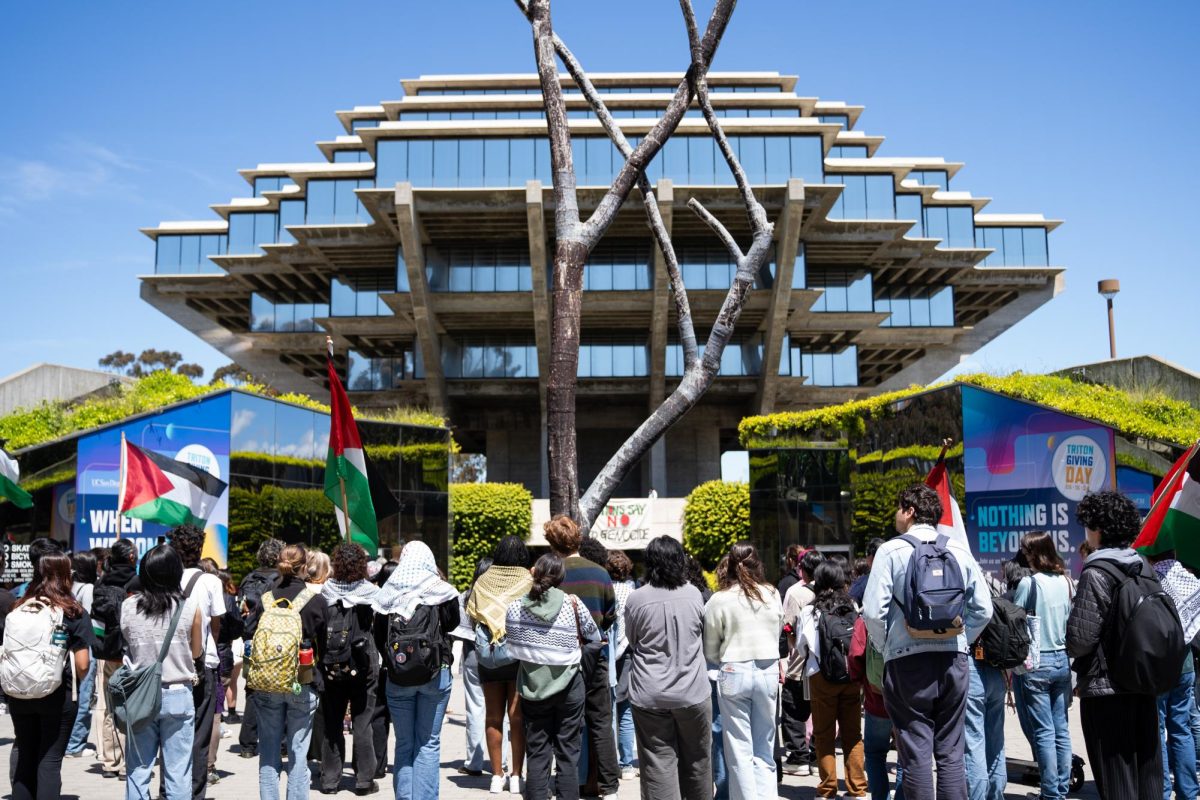A.S. COUNCIL — With the recent development of the
Intercollegiate Football Feasibility Task Force — a group which will analyze both
the negatives and the positives of founding a campus football team — UCSD
finally seems to be taking a step toward the establishment of a team. Students
may hope that, with this step, the
“UCSD Tritons football — still undefeated!” can become a reality.
Unfortunately, after all the evidence is produced, students will be
disappointed to find that it would be virtually impossible to establish a
football team due to the budgetary constrictions and lack of student commitment.
One of the most important issues regarding the development
of a football team stems from its cost. As Chancellor Marye Anne Fox said at
the Nov. 1 A.S. Council meeting, a team would cost more than the previous
$1-million prediction. For example, Division-I program schools spend at most
about $100 million, while according to UC Davis’ program site, its Division-II
team spent approximately $31 million just on a stadium.
With the slated $400-million cut in state funding to the UC
system, it is obvious that the belt-tightening measures that are now being
taken by the UC Board of Regents would leave no room in the athletics
department’s budget for a football program. With last year’s referendum
requiring students to pay for some athletic programs, the school clearly would
not have enough money to pay for a team — unless another referendum forces
students to pay for it again.
Even if a referendum were to be proposed, having students
pay for a new football team may not be a piece of cake. Although last year’s
referendum squeaked out an approval from students, the last three attempts to
pass a referendum to bring back the once disbanded 1968 team have all failed.
With students already paying over $300 each year due to last year’s fee
increases, another supported referendum seems extremely unlikely.
But there are even more complications. During the Jan. 20
A.S. Council meeting, when asked if she was willing to meet with the task
force, Vice Chancellor of Student Affairs Penny Rue agreed but warned that
there were more hidden problems in the establishment of a football team than
just feasibility.
Incentive is necessary in any financial situation. It may be
possible to create and fund a football team, but if there is no funding
incentive, there is no reason for the school to invest in it. The vice
chancellor listed infrequent games as one of the apparent problems. An average
football team plays approximately 10 to 12 games during the regular season,
with a few more if the team were to make it to the playoffs. But weak
attendance, similar to what the existing Triton teams face, would prove
disastrous. In this situation, balancing costs and benefits is crucial and a
team that neither generates revenue nor fan support hardly carries incentive.
A visit to any one of UCSD’s sports games would highlight
the difficulties in attempting to create a football team. Many games get less
than 10 spectators, which clearly reflects the apathetic attitude students have
for Triton sports. Even mainstream sports like baseball — despite being ranked
15th in Division II and a favorite to finish first in the California Collegiate
Athletic Association, according to its coaches — are not receiving much
attention from students. This simple statistic shows: A developing football
team wouldn’t get much love from students.
Another problem lies within the issue of gender equity. It
generally takes about 80 players, including staff, in order to start a football
team — just do the math.
There are 11 players in both the offensive and the defensive
units, along with about seven coaches for each position: the head coach,
offensive coordinator, defensive coordinator and special teams coach along with
about two or three assistants. So, including second- and third-string players,
the numbers add up fast. In almost every university football team — including
UCLA, USC and UC Berkeley, the players are overwhelmingly male. Title IX, which requires schools have
an equal number of athletic opportunities for both genders, would then cause a
problem. Since statistics show that women are less likely to participate in
football, the school would need to accommodate at least three more athletic
teams that would appeal to women. That means more teams would need to be funded
by the already stretched budget.
The IFFT’s attempt to research the feasibility of a football
team is a remarkable and commendable effort, but sadly the evidence will only
show the obvious: UCSD does not have enough money, support or incentive to
establish a viable football team.
Sure, having a football team may boost spirit and facilitate
recreational opportunities, but these small benefits are a long time coming and
give little to overcome the insurmountable startup problems. So, instead of
hoping for a football team, the best thing students can do is to involve
themselves in the other numerous existing teams on campus. School athletics
does not start and end with football; sports such as rugby offer similar
strategy and intensity.







